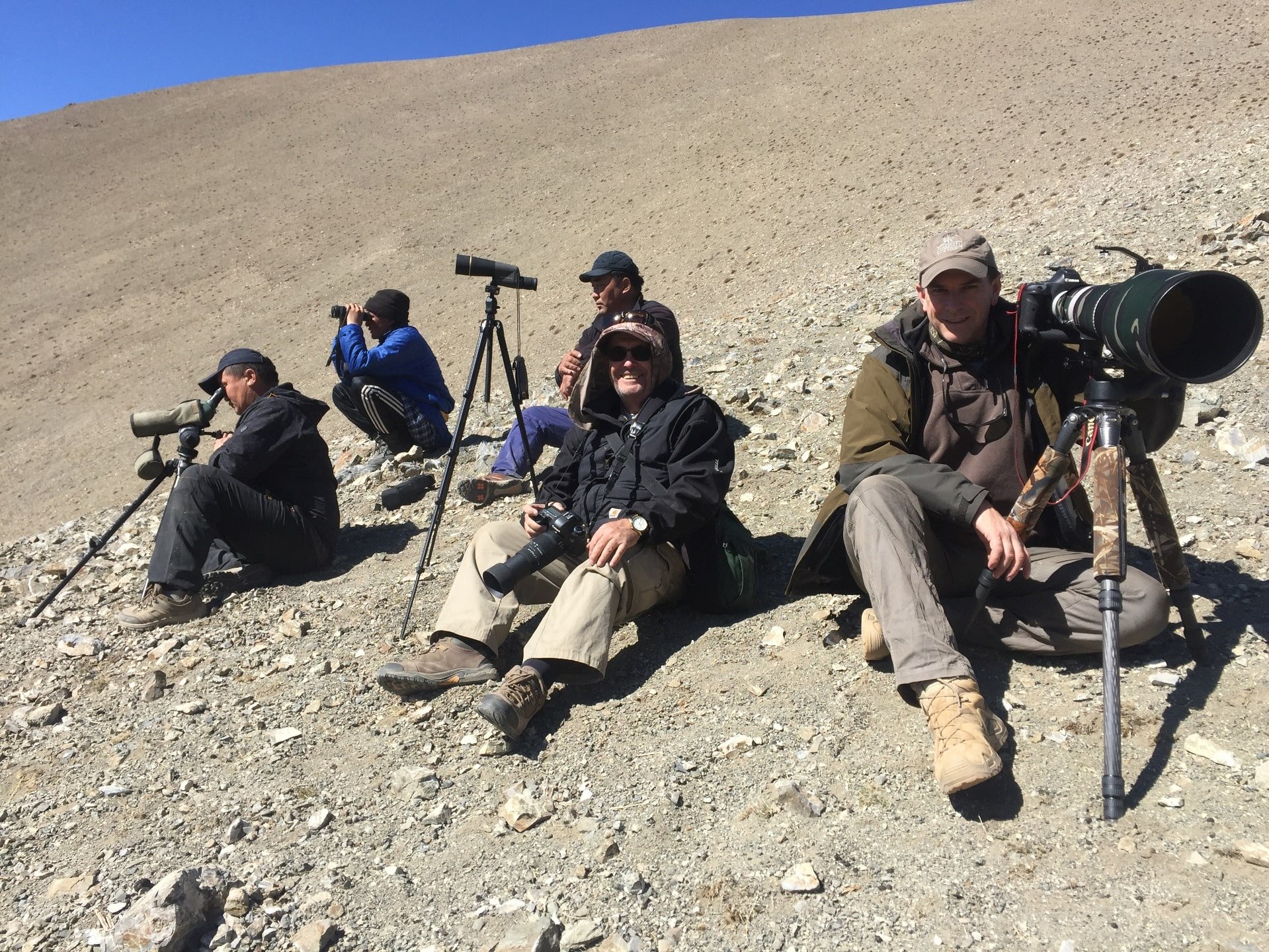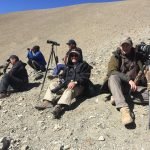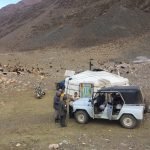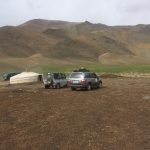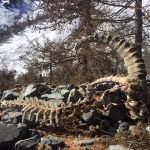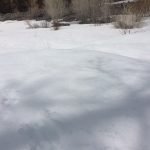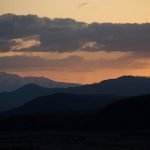Western Mongolia is home to Mongolia’s largest mountain system, the Altai. It consists of thousands of small sub-ranges, overlooking dramatic river valleys, dry basins and lakes inhibited by nomadic herders. Our scouting trip took place in the homeland of Mongolia’s elusive cat the snow leopard, known as Irves in Mongolia. Of the estimated 5,000 world snow leopard populations, 1,500 individuals are believed to roam in the Mongolian wilderness at over 30 different locations. Western Mongolia is known to have one of the largest concentrations
In April, temperature can be around 10 Celsius during the day so it is pleasant for walking and looking for wildlife. This picture was taken un Turgen Mountains of Uvs province
The journey was teamed up with our friend and a Swiss national Patrick Meier and Doug Miller from Australia. Doug is a true Aussie easy goer and travel enthusiast who is also an amateur paleontologist. This was his third consecutive visit to Mongolia. Patrick has spent years in traveling through African Serengeti and South American jungles photographing the elusive cat family members. His specialty using trap cameras to photograph wild animals was truly amazing and during the visit, he got a beautiful shot of Rock Martin in the early hours brisk April morning weather.
In all, our journey covered over 1,800 km of overland driving through four distinctive national parks. These visits gave us an in-depth knowledge about the terrain, flora and fauna, suitable times to visit and most importantly where and how to arrange wildlife safaris, tracking the cat. We were escorted by chief rangers of the local parks who would provide us with valuable information regarding challenges and opportunities facing the park conservation efforts.
We ended up photographing dozens of fresh footprints some of which were trailed by as few as 15 minutes. We sited the argali wild sheep and ibex the wild goat every morning and afternoon. In one area, we came across a herd of about 400 wild goats in one area. The goats usually form large herds every spring before their birth season starts but seeing them in the hundreds was a spectacular scene.
The central premise of our wild life journey centers around running these wildlife viewing programs while under an official partnership with the local parks. Through our travel programs, we aim to bring tangible benefits both to the local parks authorities and local herders who lived in the area for generations. Seeing parts of Mongolia still unaffected by any development or human footprints was a privilege in itself.


